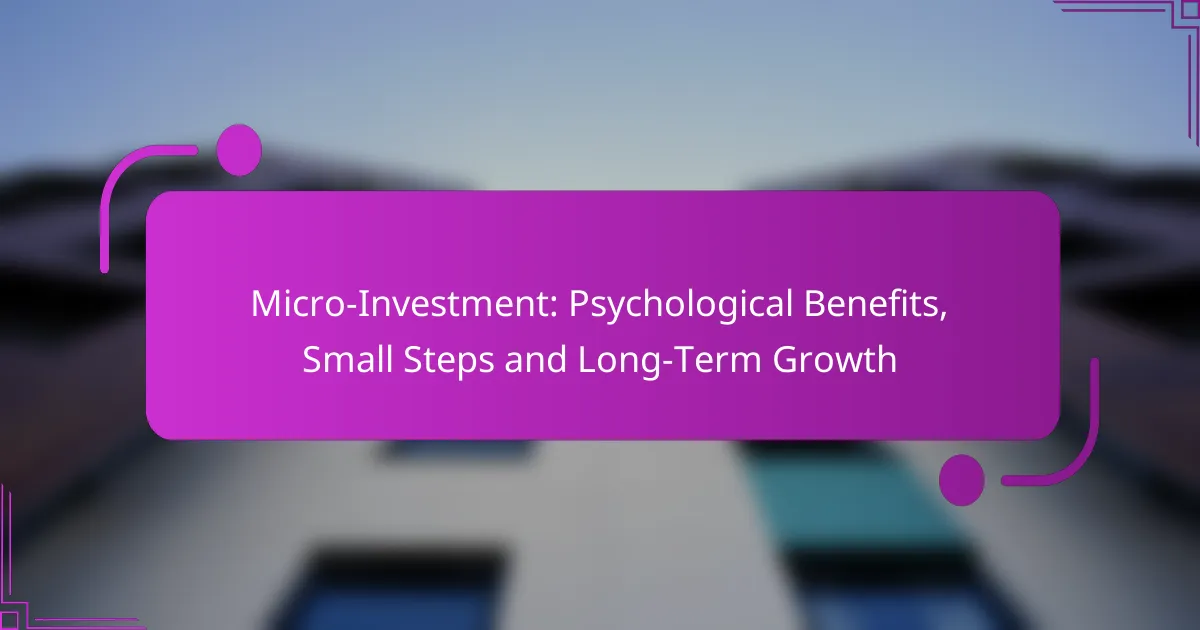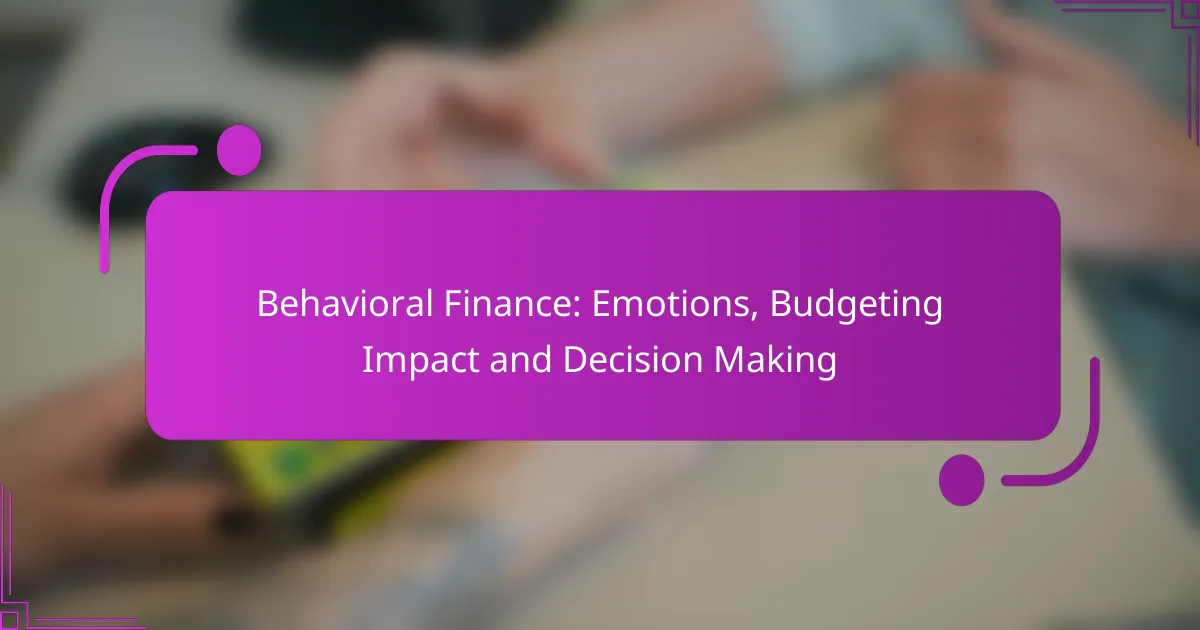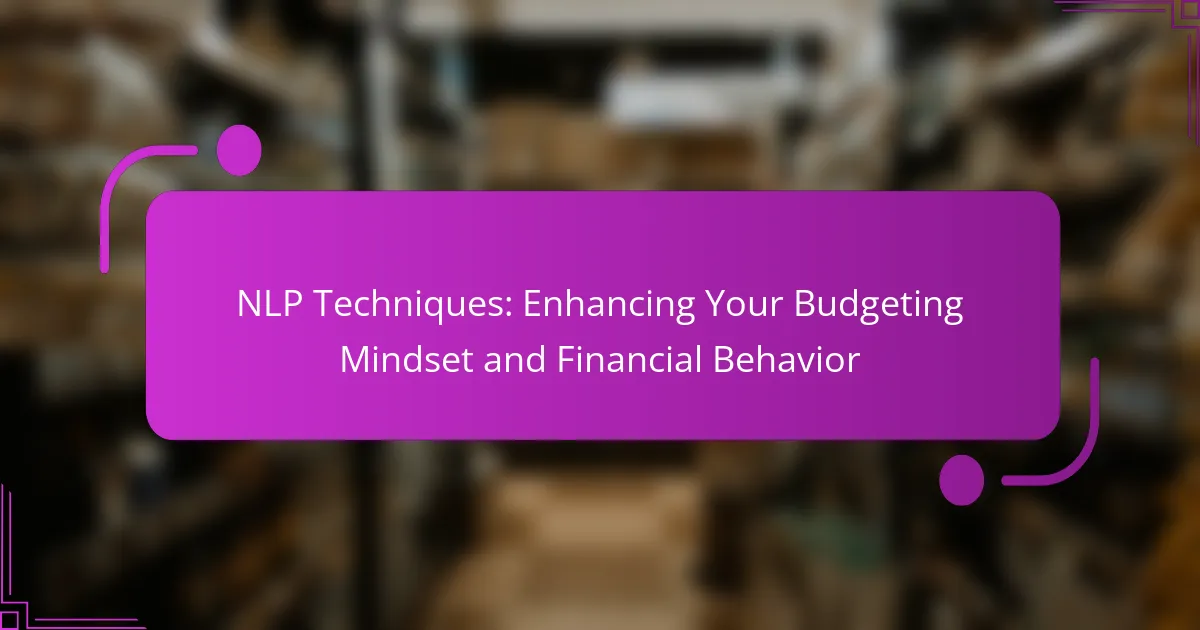Micro-investment is a powerful tool for enhancing financial well-being by making investing accessible through small, manageable contributions. This approach not only encourages saving habits but also instills confidence and a sense of control over personal finances, reducing the intimidation often associated with traditional investing.
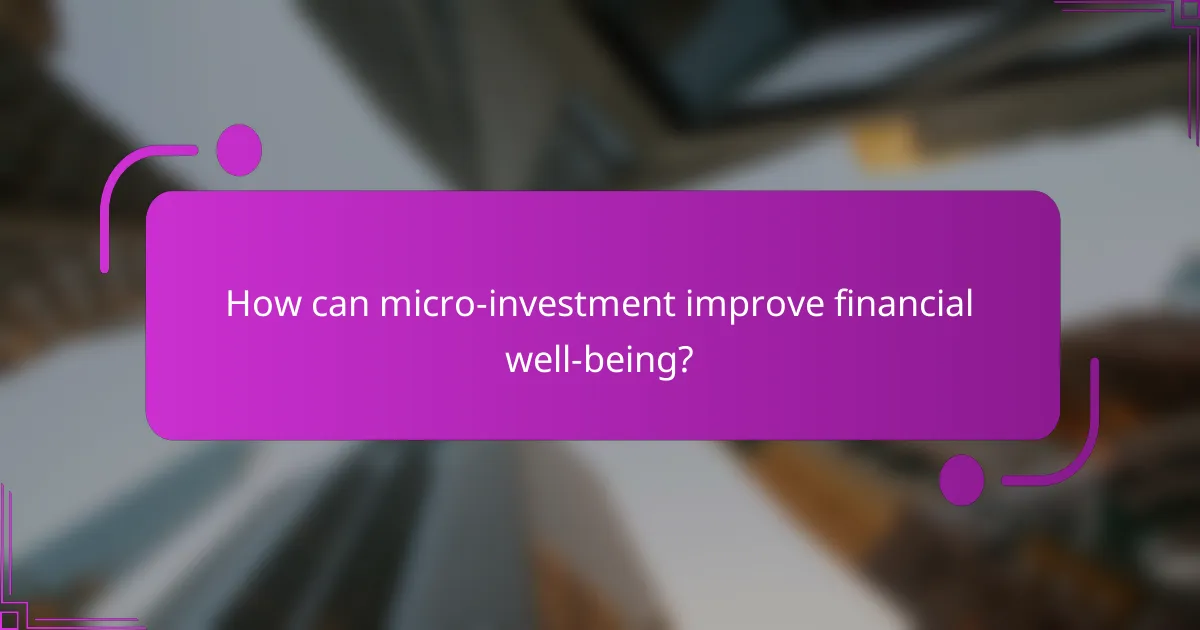
How can micro-investment improve financial well-being?
Micro-investment can significantly enhance financial well-being by making investing accessible and manageable for individuals. By allowing small, incremental contributions, it fosters a habit of saving and investing without overwhelming financial commitments.
Increased financial literacy
Micro-investment platforms often provide educational resources that help users understand the basics of investing. As individuals engage with these platforms, they learn about asset classes, market trends, and investment strategies, which boosts their financial knowledge.
For instance, many apps offer tutorials or articles that explain concepts like diversification or risk management. This gradual exposure to financial education empowers users to make informed decisions, ultimately enhancing their confidence in managing their finances.
Reduced anxiety about investing
Investing can be intimidating, but micro-investment lowers the stakes by allowing users to start with minimal amounts. This approach reduces the fear of losing significant sums of money, making it easier for individuals to take the first step toward investing.
Moreover, the simplicity of investing small amounts regularly can alleviate the pressure to achieve immediate high returns. Users can focus on the long-term growth of their investments, which helps to mitigate anxiety and encourages a more relaxed approach to financial planning.
Enhanced savings habits
Micro-investment encourages consistent saving by integrating small contributions into users’ financial routines. Many platforms allow users to set up automatic transfers, making it effortless to save without actively thinking about it.
For example, rounding up purchases to the nearest dollar and investing the difference can lead to significant savings over time. This method not only builds a habit of saving but also creates a sense of accomplishment as users watch their investments grow, reinforcing positive financial behaviors.

What are the psychological benefits of micro-investment?
Micro-investment offers several psychological benefits, including enhanced confidence in financial decisions and a greater sense of control over personal finances. By allowing individuals to invest small amounts, it reduces the intimidation often associated with traditional investing, making it more accessible and manageable.
Boosted confidence in financial decisions
Micro-investment can significantly boost confidence in financial decisions by allowing individuals to start investing with minimal risk. When people see their small investments grow, it reinforces positive behaviors and encourages them to make more informed choices in the future.
For example, investing as little as $5 or $10 in diversified portfolios can help individuals learn about market trends and investment strategies without the fear of losing large sums. This gradual exposure builds a foundation for more substantial investments later on.
Improved sense of control over finances
Engaging in micro-investment fosters a stronger sense of control over personal finances. By regularly contributing small amounts, individuals can actively manage their financial future and track their progress towards specific goals, such as saving for a vacation or building an emergency fund.
Setting up automatic contributions can further enhance this sense of control, as it creates a routine that integrates investing into everyday life. This approach not only helps in budgeting but also instills discipline, making financial management feel more achievable.
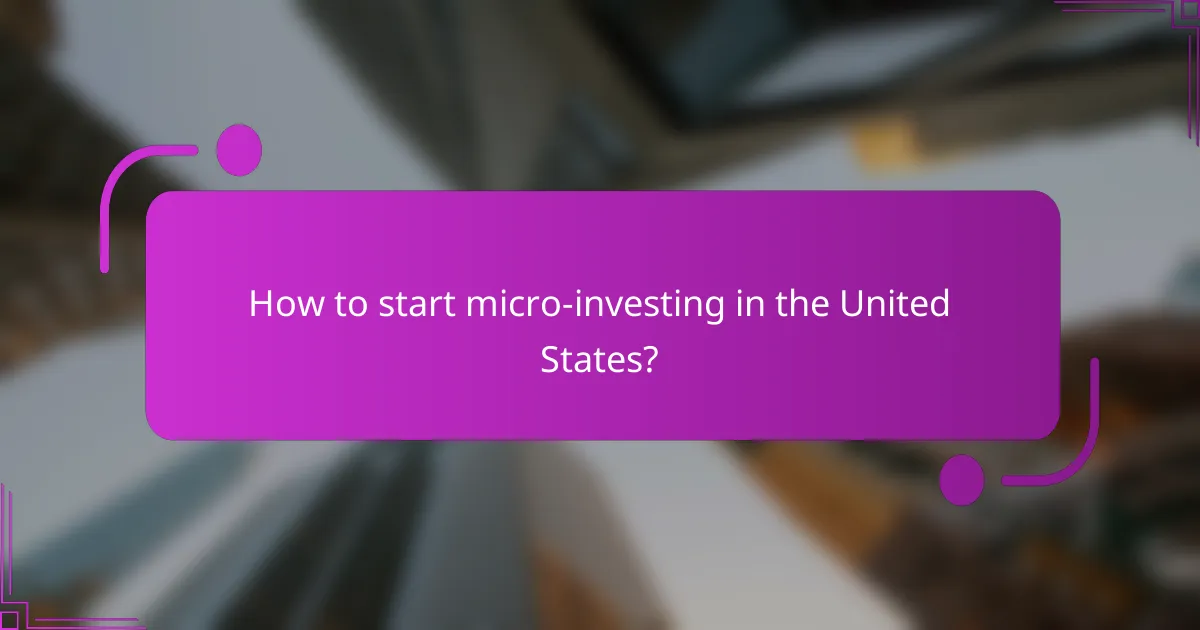
How to start micro-investing in the United States?
To start micro-investing in the United States, choose a user-friendly platform that allows you to invest small amounts of money regularly. Focus on apps that simplify the process and provide educational resources to help you understand your investments.
Using apps like Acorns and Stash
Acorns and Stash are popular micro-investing apps that cater to beginners. Acorns rounds up your everyday purchases and invests the spare change, while Stash allows you to invest in fractional shares of stocks and ETFs with as little as $5.
Both platforms offer educational tools to help you learn about investing. Acorns charges a monthly fee, while Stash has a tiered subscription model, so consider your budget and investment goals when choosing between them.
Setting up automatic contributions
Automatic contributions are a key feature of micro-investing that help you build your portfolio without thinking about it. You can set up recurring transfers from your bank account to your investment app, making it easier to invest consistently.
Start with a small amount, such as $5 to $20 per week, and adjust as your financial situation changes. This strategy not only helps you save but also takes advantage of dollar-cost averaging, which can reduce the impact of market volatility over time.
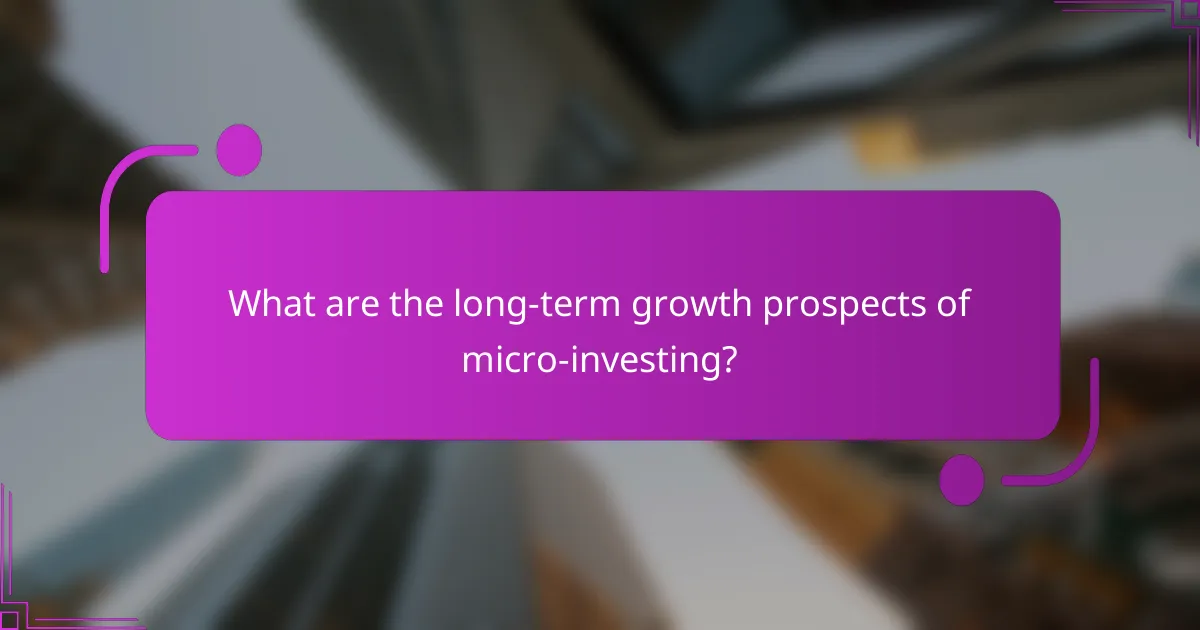
What are the long-term growth prospects of micro-investing?
Micro-investing offers promising long-term growth prospects by allowing individuals to invest small amounts of money regularly. Over time, these incremental investments can accumulate significantly, benefiting from market growth and compounding returns.
Compound interest effects
Compound interest is a critical factor in the growth of micro-investments. When you invest small amounts consistently, the returns generated begin to earn their own returns, creating a snowball effect. For example, investing $10 monthly at an average annual return of 7% could grow to over $1,000 in 20 years, illustrating the power of compounding.
To maximize the benefits of compound interest, start investing as early as possible and maintain a consistent investment schedule. Avoid withdrawing funds prematurely, as this can disrupt the compounding process and diminish potential growth.
Potential for wealth accumulation
Micro-investing can lead to substantial wealth accumulation over time, especially when combined with disciplined saving habits. By investing small amounts regularly, individuals can gradually build a diversified portfolio without the need for large upfront capital. This approach makes investing accessible to a broader audience, including those with limited financial resources.
Consider setting specific financial goals and using micro-investing platforms that allow for automatic contributions. This strategy helps create a habit of saving and investing, ultimately leading to greater financial security. Remember to review your investments periodically to ensure they align with your long-term objectives.
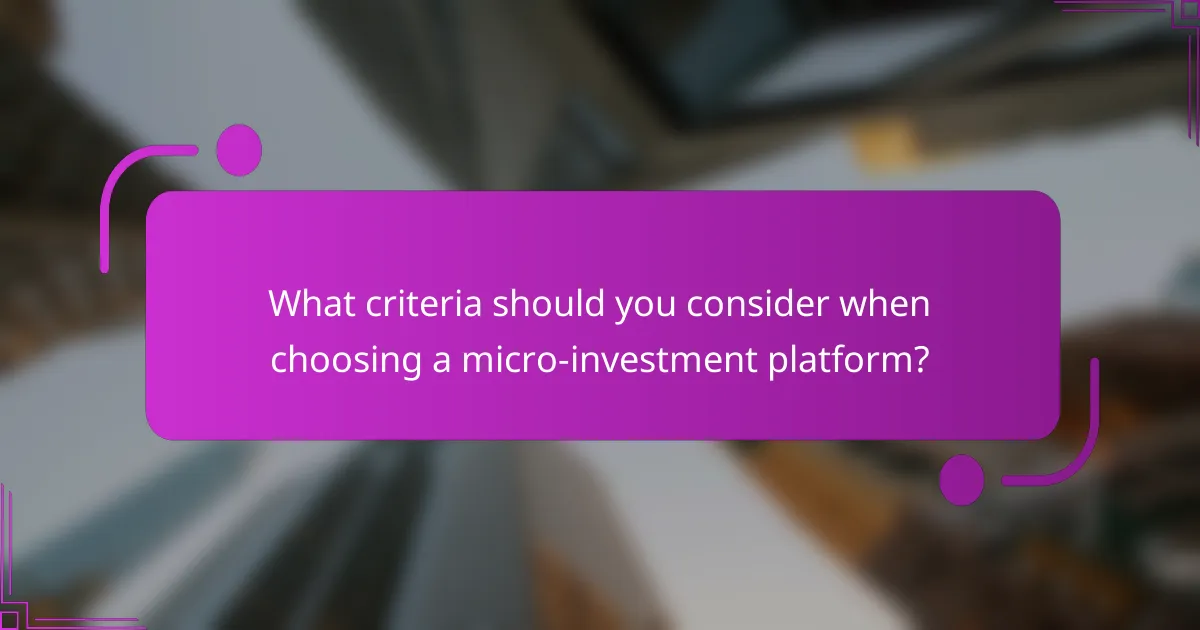
What criteria should you consider when choosing a micro-investment platform?
When selecting a micro-investment platform, focus on fees, available investment options, and user experience. These factors will significantly impact your investment journey and overall satisfaction with the platform.
Fees and charges
Understanding the fees and charges associated with a micro-investment platform is crucial. Look for platforms that offer transparent fee structures, including management fees, transaction fees, and withdrawal fees. Aim for platforms with low fees, ideally under 1% for management costs, to maximize your returns.
Some platforms may charge flat fees per transaction, while others might have percentage-based fees. Always calculate how these fees will affect your investment growth over time, especially if you plan to invest regularly.
Investment options available
The variety of investment options is another key criterion when choosing a micro-investment platform. Many platforms offer a range of assets, including stocks, ETFs, and bonds. Ensure the platform aligns with your investment goals and risk tolerance.
Consider platforms that allow for diversification across different sectors or asset classes. This can help mitigate risk and enhance potential returns. Additionally, check if the platform provides automated investment strategies or personalized portfolios to simplify your investment process.
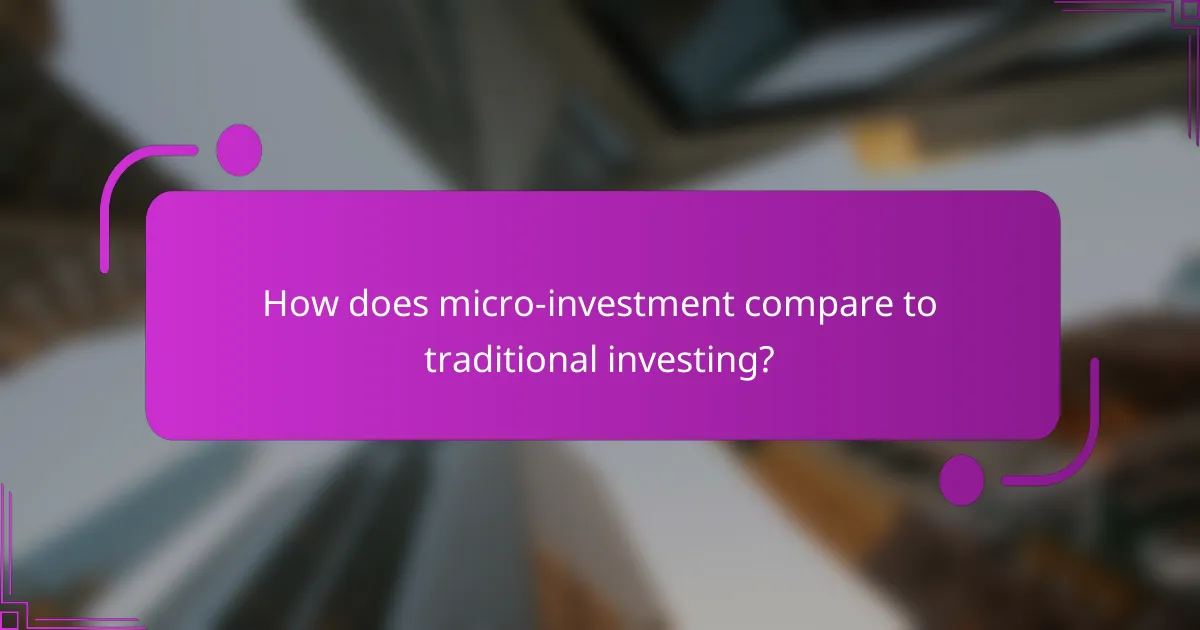
How does micro-investment compare to traditional investing?
Micro-investment allows individuals to invest small amounts of money, often with lower fees and minimal commitment, making it accessible compared to traditional investing. While traditional investing typically requires larger capital and more extensive knowledge, micro-investment platforms simplify the process, enabling users to start with as little as a few dollars.
Lower entry barriers
Micro-investment platforms significantly reduce the entry barriers associated with traditional investing. Many traditional investment accounts require minimum deposits that can range from hundreds to thousands of dollars, while micro-investing allows users to start with as little as $5 or $10. This accessibility encourages more people to begin investing, regardless of their financial situation.
Additionally, micro-investment apps often have user-friendly interfaces and educational resources that help beginners understand the basics of investing. This contrasts with traditional brokerage accounts that may require more financial literacy and experience to navigate effectively.
Different risk profiles
Micro-investment typically involves a different risk profile compared to traditional investing. Since micro-investing allows users to invest smaller amounts, the financial risk is generally lower. Investors can spread their investments across various assets without committing significant capital, which can mitigate potential losses.
However, it’s essential to recognize that micro-investment may also lead to higher volatility in returns, especially if investments are concentrated in high-risk assets. Investors should consider their risk tolerance and investment goals when choosing between micro-investment and traditional investment options. Diversifying across different asset classes can help balance risk while still benefiting from the growth potential of micro-investing.
